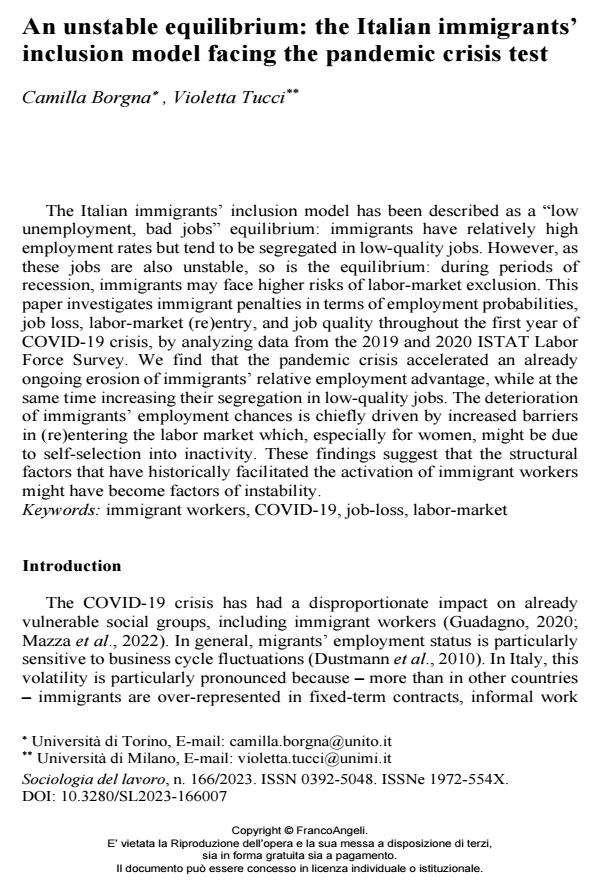An unstable equilibrium: the Italian immigrants’ inclusion model facing the pandemic crisis test
Journal title SOCIOLOGIA DEL LAVORO
Author/s Camilla Borgna, Violetta Tucci
Publishing Year 2023 Issue 2023/166
Language English Pages 28 P. 155-182 File size 644 KB
DOI 10.3280/SL2023-166007
DOI is like a bar code for intellectual property: to have more infomation
click here
Below, you can see the article first page
If you want to buy this article in PDF format, you can do it, following the instructions to buy download credits

FrancoAngeli is member of Publishers International Linking Association, Inc (PILA), a not-for-profit association which run the CrossRef service enabling links to and from online scholarly content.
The Italian immigrants’ inclusion model has been described as a "low unemployment, bad jobs" equilibrium: immigrants have relatively high employment rates but tend to be segregated in low-quality jobs. However, as these jobs are also unstable, so is the equilibrium: during periods of recession, immigrants may face higher risks of labor-market exclusion. This paper investigates immigrant penalties in terms of employment probabilities, job loss, labor-market (re)entry, and job quality throughout the first year of COVID-19 crisis, by analyzing data from the 2019 and 2020 ISTAT Labor Force Survey. We find that the pandemic crisis accelerated an already ongoing erosion of immigrants’ relative employment advantage, while at the same time increasing their segregation in low-quality jobs. The deterioration of immigrants’ employment chances is chiefly driven by increased barriers in (re)entering the labor market which, especially for women, might be due to self-selection into inactivity. These findings suggest that the structural factors that have historically facilitated the activation of immigrant workers might have become factors of instability.
Keywords: immigrant workers, COVID-19, job-loss, labor-market
- La segmentazione del mercato del lavoro migrante in italia: dinamiche durante e dopo la pandemia da Covid-19 Antonio Sanguinetti, in ECONOMIA E SOCIETÀ REGIONALE 1/2024 pp.11
DOI: 10.3280/ES2024-001002
Camilla Borgna, Violetta Tucci, An unstable equilibrium: the Italian immigrants’ inclusion model facing the pandemic crisis test in "SOCIOLOGIA DEL LAVORO " 166/2023, pp 155-182, DOI: 10.3280/SL2023-166007